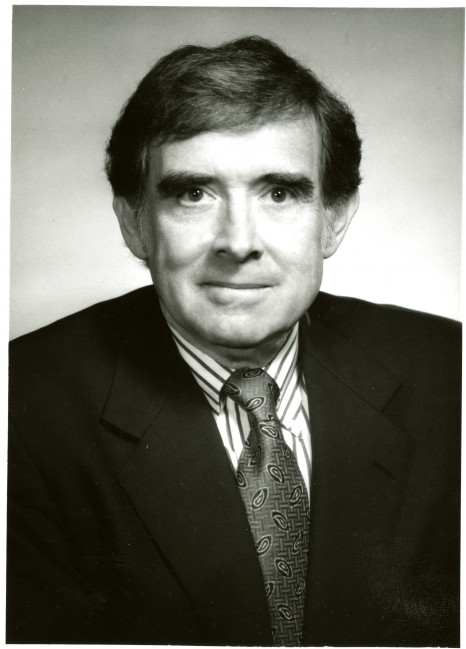Olin C. Robison
 Olin Clyde Robison was the thirteenth president of Middlebury. Born in 1936 in Anacoco, Louisiana, he attended Baylor University, graduating in 1958 with a BA in history, religion, and philosophy. Entering Southwestern Theological Seminary, he served as pastor of a small Baptist church in central Texas. In 1960 he studied church history at Oxford University, receiving a DPhil in 1963. Returning to Texas, he accepted the post of dean of students at San Marcos Academy. A year later he joined the Washington administration of fellow Texan President Lyndon B. Johnson, becoming director of university affairs in the Peace Corps. In 1966, Robison then moved to the State Department, where he became a special assistant to the deputy undersecretary of state, writing speeches for Secretary Dean Rusk and serving as liaison between the State Department, the Pentagon, and the Central Intelligence Agency.
Olin Clyde Robison was the thirteenth president of Middlebury. Born in 1936 in Anacoco, Louisiana, he attended Baylor University, graduating in 1958 with a BA in history, religion, and philosophy. Entering Southwestern Theological Seminary, he served as pastor of a small Baptist church in central Texas. In 1960 he studied church history at Oxford University, receiving a DPhil in 1963. Returning to Texas, he accepted the post of dean of students at San Marcos Academy. A year later he joined the Washington administration of fellow Texan President Lyndon B. Johnson, becoming director of university affairs in the Peace Corps. In 1966, Robison then moved to the State Department, where he became a special assistant to the deputy undersecretary of state, writing speeches for Secretary Dean Rusk and serving as liaison between the State Department, the Pentagon, and the Central Intelligence Agency.
Robison returned to the academy in 1968, serving two years as associate provost at Wesleyan University and four years as provost at Bowdoin College. The Middlebury selection committee then chose Robison to succeed retiring President James Armstrong, and he was elected by the trustees in April, 1975.
Robison inherited an institution that had grown dramatically in the 1960s, then retrenched in the recessionary, energy-crisis 1970s. It was suffering from a dip in morale. The faculty was pinched by static wages and was restive about the tenure process. There was a wide breach between students and administration over overcrowded dormitories and classrooms, social issues, and the occasional punitive responses to student lifestyles. In response, Robison pledged to inject a vitality similar to that which existed in the early Armstrong years. He encouraged dramatic curricular change. “Foundation courses” across three of the four college divisions and “concentrations” in fields different from majors broadened the Middlebury education. There were new majors and interdisciplinary programs: Jewish studies, literary studies, classical studies, Northern Studies, and East Asian studies. With substantial grant support, the College established professorships in linguistics, Russian and Soviet Area studies, economics, art history, performing arts, literature, and creative writing.
Meanwhile, by the late 1980s, the faculty had increased from 144 in 1975 to 203 in 1986, and it was substantially better paid, with a program for leaves, professional development, and conference attendance.
At the same time, the campus grew. Most significantly, Starr Library was enlarged with a $2 million wing named after former Board Chairman L. Douglas Meredith. A science library was installed in the Science Center, and Warner Hall was modernized. An alumni and conference center named for John and Barbara Kirk was built on the edge of an expanded golf course. The Memorial Field House was renovated, with its gymnasium remodeled and dedicated to Arthur Pepin, ‘47. A $1 million fitness center grew out the back of the Field House.
On October 6, 1989, President Robison called an all-campus meeting in Mead Chapel and announced he was resigning at the end of the following summer. After a year’s leave of absence, President Emeritus Olin Robison taught in the political science department.